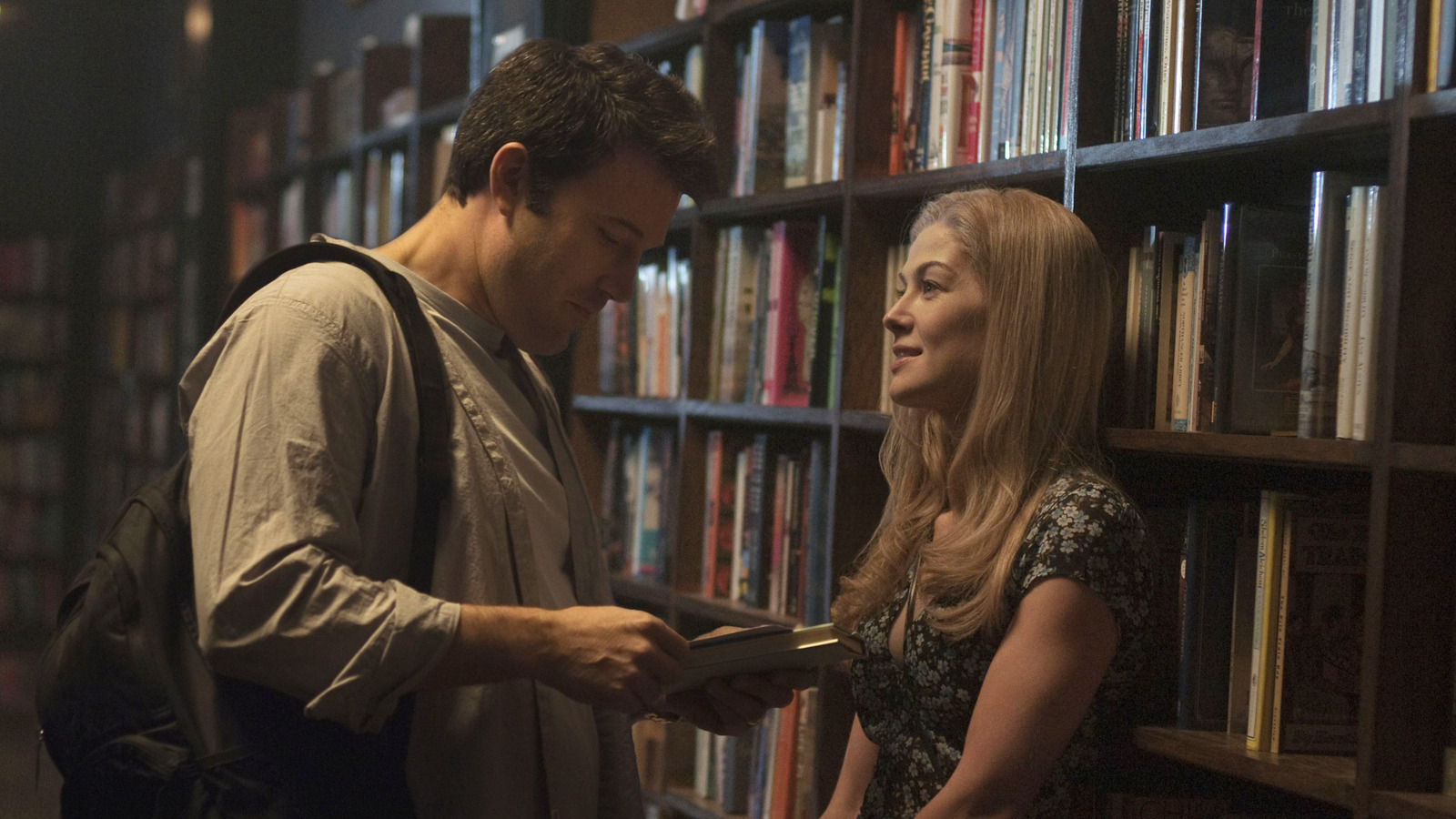
by admin | Jul 22, 2025 | TV & Beyond Articles
“Gone Girl” is an absolutely haunting crime thriller, right down to its memorable ending, as it explores the twisted marriage between its lead characters. The novel is written by Gillian Flynn, who also wrote the acclaimed 2014 film adaptation directed by David Fincher, effectively introducing one of cinema’s best villains to the spotlight. The all-around success surrounding “Gone Girl” fueled a wave of similar thrillers in film and television, often also told from a female protagonist’s perspective. Flynn herself has had a hand in several of these productions to varying degrees, including having her other novels get adapted for the screen.
But while we’ve already recommended the best movies like “Gone Girl” that you should watch next, let’s take it back to where it all began: The books. There are plenty of thriller novels where the tension practically pops off the page. And whether written by Flynn or by another author masterfully weaving in literary suspense, these books will satisfy readers looking for their next tautly paced story. Here are the 12 best books to read if you like Gillian Flynn’s “Gone Girl.”
The Girl with the Dragon Tattoo
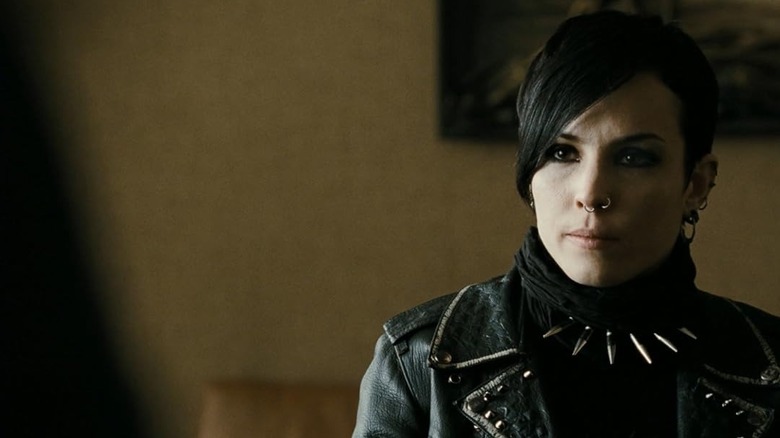
Nordisk Film
Swedish author Stieg Larsson’s landmark 2005 novel “The Girl with the Dragon Tattoo” is one of those rare books that transcends borders to capture an entire generation. The story centers on punk rock hacker Lisbeth Salander and investigative journalist Mikael Blomkvist, who live separately in Stockholm. Blomkvist is hired to look into the apparent murder of a young woman on a remote island 40 years ago. This investigation is shadowed by Salander, who has her own troubled past, using her prodigious skills to help solve the mystery.
Larsson’s novel was adapted by Swedish filmmakers in 2009 and by American filmmaker David Fincher in 2011, with both versions inking your brain with a lasting impression. Larsson wrote an entire trilogy of novels following Salander and Blomkvist, which were unfortunately all published posthumously after the author’s sudden death in 2004. That the stories became so renowned worldwide is a testament to Larsson’s sharp writing and propensity for crafting spellbinding mysteries. Dark and breathlessly intense, “The Girl with the Dragon Tattoo” is one of the best crime thrillers published in the 21st century.
Sharp Objects
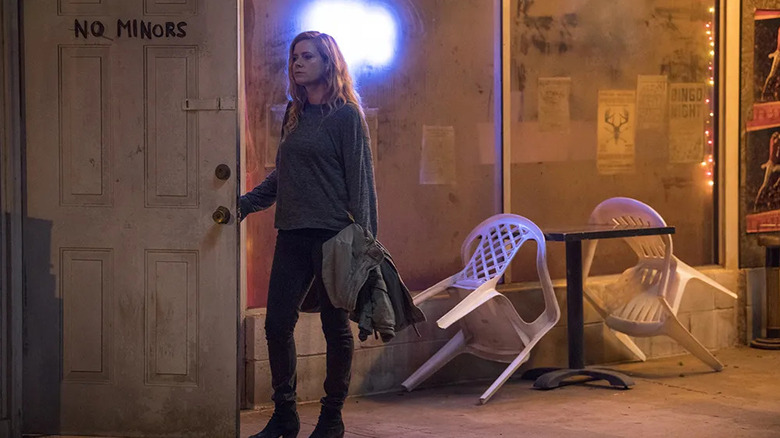
HBO
Twelve years after its initial publication, Gillian Flynn’s debut novel, 2006’s “Sharp Objects,” was adapted into an HBO limited series. The novel has troubled investigative journalist Camille Preaker return to her hometown in rural Missouri to look into the murder of two local girls. Camille’s return forces her to reunite with her deeply estranged mother, Adora, and her similarly disturbed half-sister, Amma. As Camille’s investigation deepens, she not only confronts her unresolved trauma inflicted by Adora but also contends with the realization that her mother may be linked to the murders.
“Sharp Objects” showcases Flynn’s penchant for crafting psychological thrillers with plenty of genuinely earned twists and turns along the way. But like her best stories, Flynn captures a deep sense of pain in her main characters, with trauma fueling just how much the truth can hurt by the novel’s ending. Camille Preaker is one of the most tortured protagonists across Flynn’s work, but no less determined to find the uncomfortable answers that she’s looking for. A grim journey into its protagonist’s own personal heart of darkness, “Sharp Objects” signaled Flynn’s arrival as a new literary master.
Dark Places
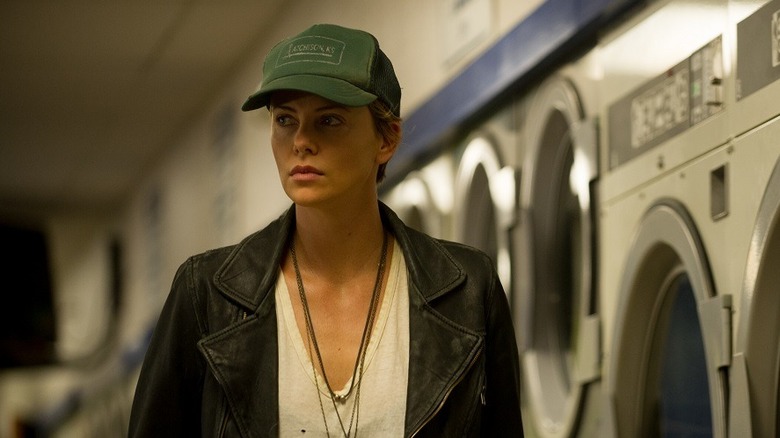
A24
After the success of “Gone Girl,” Flynn’s 2009 novel “Dark Places” was adapted and released in 2015. Set in a rural Kansas town, the story is divided into two major time periods and multiple perspectives surrounding the murder of the protagonist’s family in 1985. Decades later, the sole survivor, Libby Day, is confronted with evidence that her brother, the convicted killer, may actually be innocent. This leads Libby to revisit the horrific event and the Satanic cult linked to the massacre as flashbacks from different characters’ points of view fill out the tragedy.
Though the film adaptation was a huge A24 flop despite its all-star cast, the novel “Dark Places” is still quite good. Through the Day family, Flynn explores the hardscrabble life of extreme poverty and neglect in rural America. And for anyone looking for another multifaceted murder mystery that will keep the reader guessing like “Gone Girl,” “Dark Places” more than delivers. An HBO series adaptation of “Dark Places” is currently in development, hopefully giving Flynn’s story the adaptive justice it deserves.
Before I Go to Sleep
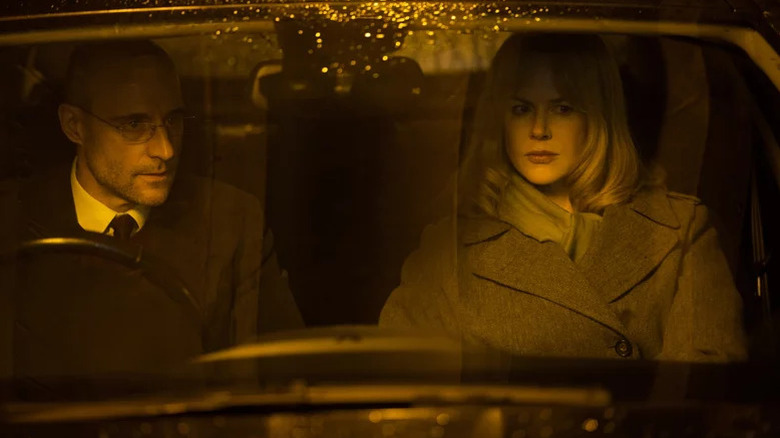
Clarius Entertainment
British writer S.J. Watson’s debut novel, 2011’s “Before I Go to Sleep,” went on to become a worldwide best-seller. The novel follows a woman named Christine Lucas, who suffers from severe antegrade amnesia, waking up each morning without conscious memories of who she is. Using a journal to remind herself of her identity, Christine is reminded that she’s a middle-aged woman with a husband and son. However, Christine gradually begins to piece together that the identity in her journal may not be entirely true, casting a strong doubt on her life.
“Before I Go to Sleep” was adapted into a movie of the same name in 2014, starring Nicole Kidman. However, much of the novel’s appeal is lost in the retelling. Comparatively, Watson’s book is well-structured, starting out as routine as Christine’s life before beginning to unravel preconceptions about her surroundings. And as unreliable as Christine’s daily journal is, Watson keeps the text accessible and the story exciting as the mystery escalates. Tautly executed and with plenty of twists along the way, “Before I Go to Sleep” is an entertaining yarn that keeps readers on the hook.
Big Little Lies
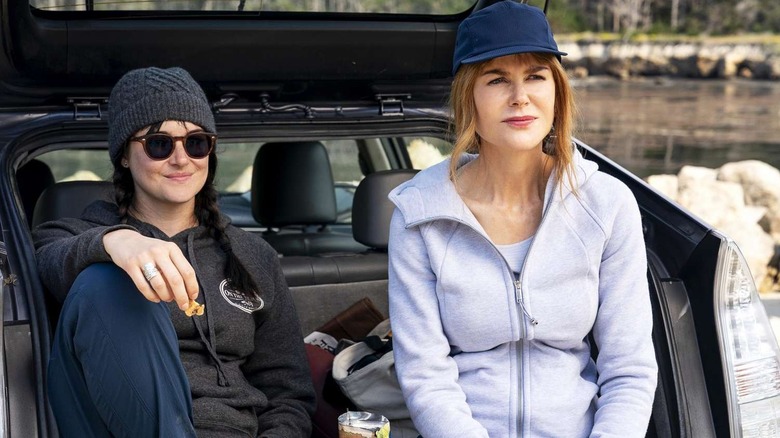
Jennifer Clasen/HBO
Mixing darkly sharp wit with intensely mature subject matter, Australian author Liane Moriarty’s 2014 novel “Big Little Lies” subverts modern suburbia. Set in the suburbs of Sydney, the book focuses on three women whose children attend the same local elementary school. As the women grow closer, they reveal the traumas and dysfunctional households that they each come from, with their dynamic tested by animosity between their children. This comes to a lethal head when the families converge for the school’s trivia night as sinister secrets from their shared past come to light.
“Big Little Lies” was loosely adapted into an HBO series in 2017, relocating the story to California, and the adaptation did give Nicole Kidman one of her best TV projects. Even those familiar with the series will be surprised by Moriarty’s novel, which keeps the stakes far more uncomfortably intimate and grounded. And while the story’s subject matter does indeed get very disturbing, Moriarty’s wicked sense of humor keeps the proceedings from becoming overly dour. Tightly written and led by a memorable ensemble cast of characters, “Big Little Lies” is one of the best books from Australia in recent memory.
The Girl on the Train
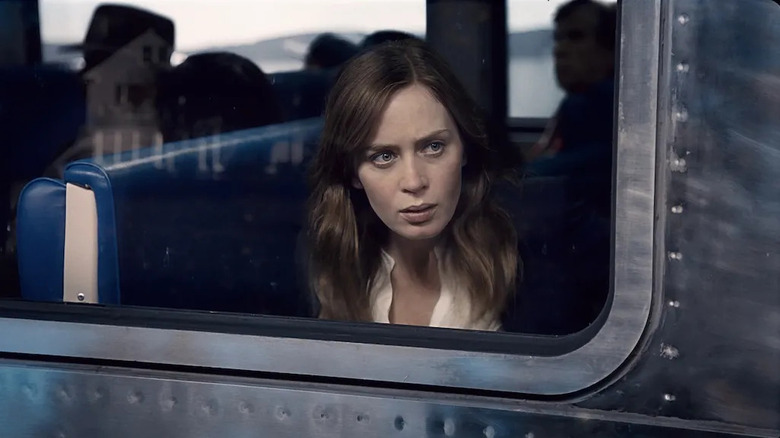
Universal Pictures
British author Paula Hawkins explored the emotional fallout of romantic decay through the lens of a psychological thriller with her 2015 novel, “The Girl on the Train.” The story focuses on Rachel Watson, a woman whose severe alcoholism ended her marriage and affects her memory through her binge drinking. While taking a regular commute from her home in London, Watson observes a seemingly picturesque young couple on a daily basis. However, when Watson realizes that the wife is engaging in an extramarital affair, her world is completely upended when the woman goes missing after one of Watson’s booze-fueled blackouts.
Given her chronic drinking problem, Rachel Watson is as unreliable a narrator as one could get, which is something Hawkins handles expertly. This uncertainty only escalates as Watson becomes directly involved with the novel’s central mystery and her own evident role in it. A film adaptation, relocating the story to New York, was released in 2016, elevated by Emily Blunt playing Watson. A heartbreaking deconstruction of apparent suburban bliss, “The Girl on the Train” will keep readers guessing until the end.
The Woman in Cabin 10
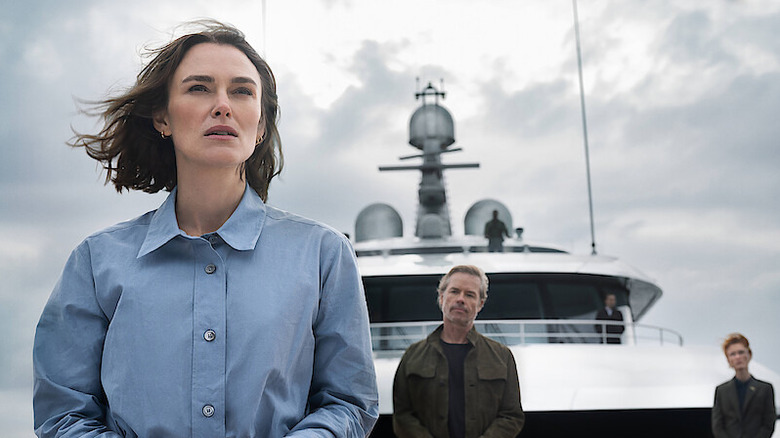
Netflix
An all-star ensemble cast is gathering for Netflix’s psychological thriller “The Woman in Cabin 10,” which is due for a 2025 release. The movie is an adaptation of the best-selling 2016 novel of the same name by British author Ruth Ware. The story follows protagonist Lo Blacklock (Keira Knightley), a travel columnist who becomes a passenger on an exclusive luxury cruise as part of her job. During the ship’s voyage in the North Sea, Blacklock believes she witnesses a woman being thrown overboard, even as all the passengers remain accounted for, leading to a cryptic mystery.
With its narrative premise and paranoia-fueled conspiracy at its core, Ware channels and modernizes similar travel murder mysteries made popular by the prolific Agatha Christie. Given the uncertainty of what exactly Blacklock saw, this heightens the unpredictability as the story progresses. The escalating suspense gives way to big twists as Blacklock moves closer to the truth, despite her fellow passengers dismissing her initial concerns as delusional. The sort of whodunnit that doesn’t really get all that much attention in the literary world these days, “The Woman in Cabin 10” makes for a great, timeless read.
The Couple Next Door
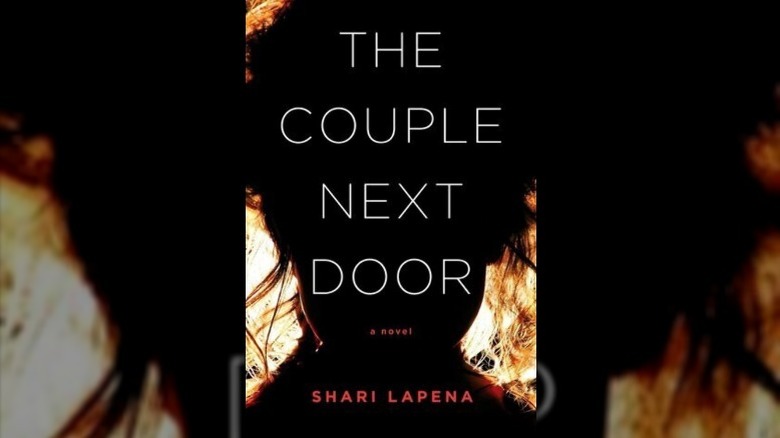
Penguin Books/Apple Books
Not to be confused with the 2023 British thriller series of the same name, Shari Lapena’s 2016 novel “The Couple Next Door” weaves a very different tale of conflicting neighbors. The book follows Marco and Anne Conti, a pair of young parents raising their infant daughter Cora next to seemingly friendly neighbors. While attending a dinner party, Anne and Marco return home to find Cora missing, casting suspicion on everyone around them, including each other. As Detective Rasbach investigates the matter, the couple must come clean with one another about their deeply held secrets as they struggle to locate their daughter.
Canadian author Shari Lapena has been crafting solid thrillers for years, but “The Couple Next Door” remains her strongest work to date. The story isn’t afraid to get messy with its interpersonal relationships, with that drama fueling much of the intensity and stakes moving forward. The idea of predatory couples preying on vulnerable families isn’t a new premise, but Lapena makes the dynamic feel fresh. An emotionally turbulent mystery powered by jealousy and deception, “The Couple Next Door” is a melodramatically effective read.
A Simple Favor
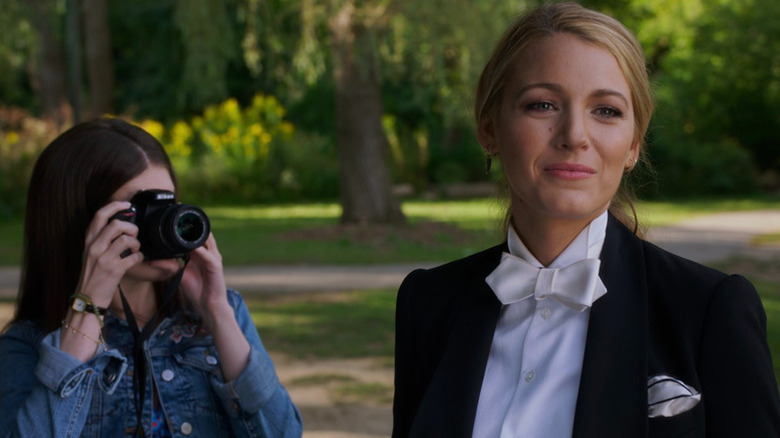
Lionsgate
The 2018 dark comedy thriller “A Simple Favor” is not based on a true story, but rather a 2017 novel written by Darcey Bell. The protagonist is mommy blogger Stephanie Ward, who agrees to pick up the son of her best friend Emily Nelson from school on one unassuming day. However, Emily soon goes missing and is presumed dead as her disappearance continues. To learn what happened to her friend, Stephanie delves into Emily’s deepest and darkest secrets, realizing she never knew her as well as she thought.
To be sure, the movie adaptation of “A Simple Favor” is a loose retelling of the novel’s story, in no small part because it’s too self-aware for its own good. Bell’s novel is much darker, eschewing the Hollywood glam for a more morally ambiguous mystery. Both Emily and Stephanie are considerably more nuanced in the literary version of the tale, instead of the overt descent into villainy that’s explored in the movie. For a more straight-laced thriller that pries the well-maintained veneer off of suburban parenthood, the novel “A Simple Wish” is a more cohesive story.
The Guest List
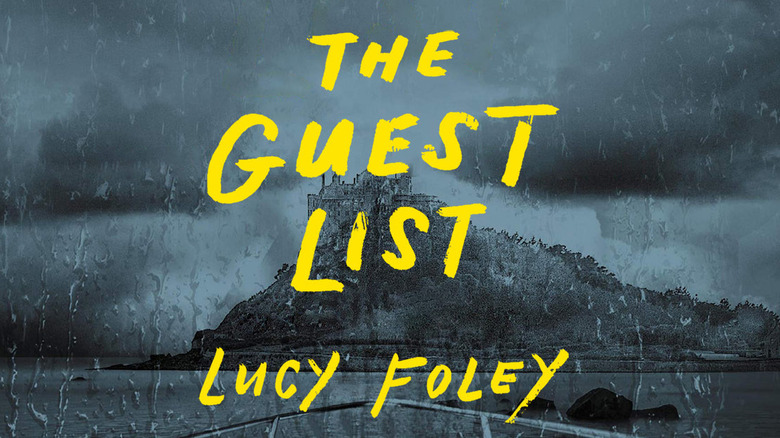
HarperCollins/Apple Books
British author Lucy Foley has been writing best-selling mystery novels since 2015, with one of the best from her work so far being 2020’s “The Guest List.” The story centers on the wedding of magazine publisher Jules Keegan and television personality Will Slater, who hold their nuptials in an exclusive ceremony on a remote Irish island. After the guests arrive, a violent storm cuts off access and communications to the mainland, effectively stranding the wedding party together in the interim. As the wedding festivities commence, tensions and dark secrets between the guests come to light, leading to a murder where anyone present could be a suspect.
If “The Woman in Cabin 10” evokes Agatha Christie’s Hercule Poirot mysteries, “The Guest List” tips its narrative hat to the author’s “And Then There Were None.” But rather than using a steadily building body count, Foley weaves a tale powered by interpersonal strife told from multiple perspectives. This makes the entire story something of a pressure cooker, finally going off with lethal consequences, and no one is safe from the implications. Superbly written, “The Guest List” has since been optioned for a limited television series adaptation through Hulu.
The Plot

Celadon Books/Apple Books
2021’s “The Plot,” written by Jean Hanff Korelitz, is a self-aware thriller with one heck of a climax and resolution. The story follows struggling author Jacob Bonner, who has resorted to teaching creative writing after failing to follow up on the success of his debut novel. Learning that one of his students with an unpublished manuscript has died from an apparent overdose, Bonner uses his story outline to finish and take full credit for his next novel. However, as Bonner basks in the public adulation of his renewed success, he receives increasingly threatening messages from someone who knows he stole the story idea from somebody else.
With the plot of Bonner’s stolen novel unfolding in parallel to the main story, “The Plot” is a great tale of life imitating fiction in disturbing ways. Korelitz’s pacing is solid, and the mystery over who is tormenting Bonner and why leads to a deliciously wicked twist at the end. The novel has since been optioned for a limited television series adaptation by Onyx Collective and Hulu. A spellbinding mystery with sharply written turns that will keep readers guessing, “The Plot” is an engrossing page-turner.
None of This Is True
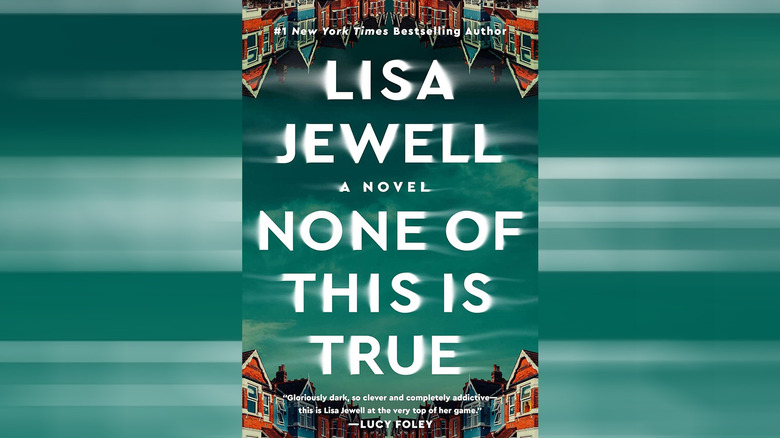
Atria/Apple Books
The dual unreliable narrator approach to “Gone Girl” is played up by the 2023 thriller novel “None of This Is True” by British author Lisa Jewell. The story focuses on two women, popular podcaster Alix Summer and put-upon housewife Josie Fair, with both women seemingly born on the same day. Intrigued by Josie’s story about being neglected by her family and sidelining her dreams, Alix agrees to a series of interviews with her as part of her podcast. However, the more Alix learns about Josie, the more troubling she finds the backstory and Josie’s growing personal attachment to her.
Just as “Gone Girl” skewers how American news media covers local crimes and incidents, “None of This Is True” shines a light on the podcasting world. While having no problem documenting the lives of others regularly, Alix finds herself uncomfortably close to her new subject, impacting her own well-being. But no matter how disturbing and outrageous Josie’s tale becomes, Alix -– and by extension, the readers –– cannot help but dive deeper into this dark recollection. A grim tale that keeps its audience on the edge of their seat, “None of This Is True” is a sordid thriller that becomes more twisted as it progresses.
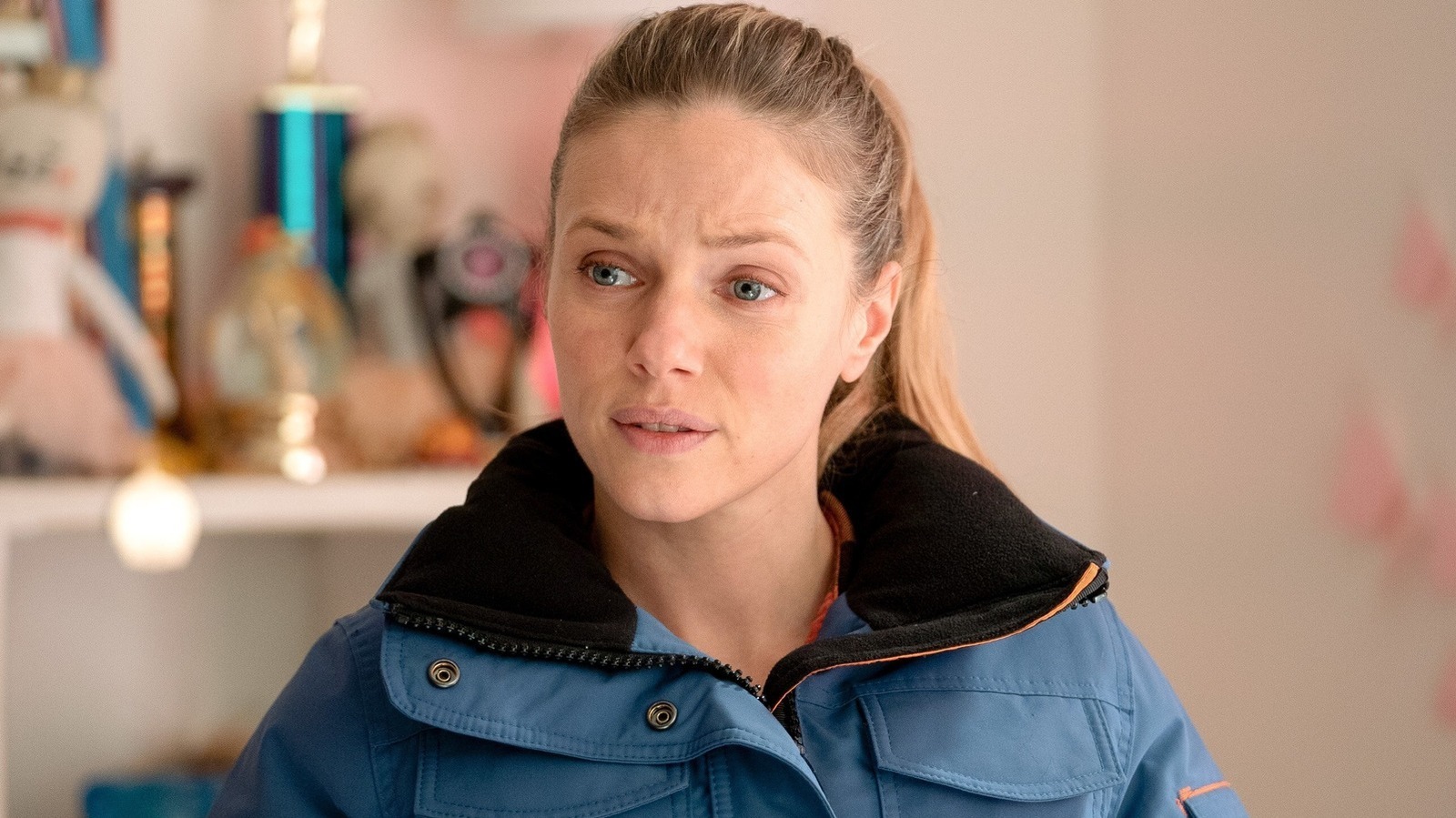
by admin | Jul 22, 2025 | TV & Beyond Articles
Scott Eastwood left the franchise before his Officer Jim Barnes even had to appear on the police drama, only turning up in the two “Chicago Fire” episodes that served as a “Chicago P.D.” backdoor pilot. Similarly, Sophia Bush’s Erin Lindsay stepped away from “Chicago P.D.” in 2017 after repeated bad experiences while filming the show, while Jesse Lee Soffer’s Jay Halstead departed “Chicago P.D.” in 2022 to explore other roles.
Then, in 2024, another “Chicago P.D.” veteran left the series. After joining the show”s fourth season as Hailey Upton and becoming a franchise mainstay, Tracy Spiridakos chose to exit the show after “Chicago P.D.” season 11. In a 2024 interview with NBC Insider, the actor explained that the reason behind her departure was similar to Soffer’s, as she simply wished to look into other opportunities after so many seasons on the police drama:
“It was a really hard decision, and I don’t know that there’s ever a right time. I think I’ve been on the show for just over seven years, like seven and a half-ish years, and I was just wanting to switch it up and kind of see what else was out there. That was really it. I’m so close with everybody. With our producers, [EP/writer Gwen Sigan], our writers, our cast, our crew. It was a really difficult and emotional time, for sure.”
Spiridakos wanted to give her character a worthy ending
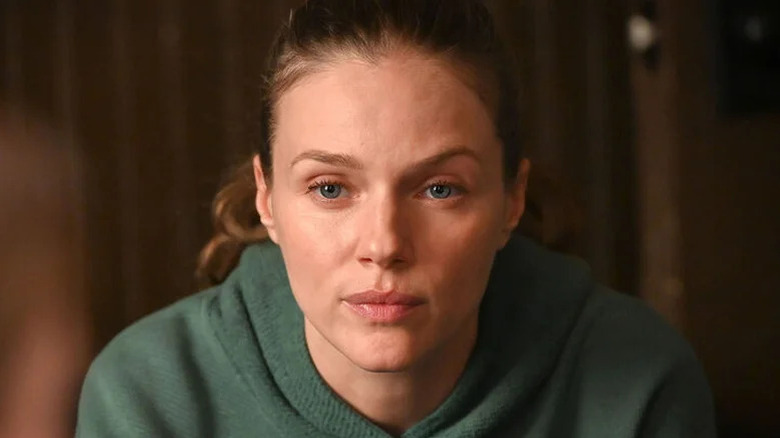
Lori Allen/NBC
Though her final “Chicago P.D.” episode aired in the spring of 2024, by November of that year Tracy Spiridakos had already wrapped filming on writer-director Michael Marantz’s indie thriller “After,” where she stars opposite folks like Dónall Ó Héalai, Kevin Pollak, and Andy Richter. This, no doubt, won’t be the last we hear of the Saturn Award-nominated actor, either.
Though this indicates that Spiridakos is clearly keeping her eyes in the ball, she certainly wasn’t in a rush to leave “Chicago P.D.” before making sure her character got the ending she deserved. Hailey Upton indeed exits the show in a highly cinematic fashion in the season 11 finale “More,” rescuing his supervisor Henry Voight (Jason Beghe) from the season’s main villain, Frank Matson (Dennis Flanagan), and ultimately choosing to leave Chicago in search of career opportunities in federal agencies. Spiridakos told NBC Insider that she had already decided to leave the series when season 10 ended, which allowed “Chicago P.D.” to create a season-long departure arc that culminates in the tense finale with Voight and Matson:
“We got to see her kind of go through [it] all … At the beginning, there’s the absolute fear of what’s gonna happen to Voight. And she lets that fear overtake her, loses her temper, and, you know, starts to feel like she’s losing control. But then we get to see her kind of ground, come back down, and focus that attention and that energy with the team and to outsmart Matson … We see at the end it’s this really vulnerable and lovely scene with Voight. And [we] see her go in a happy kind of way, which I really liked.”
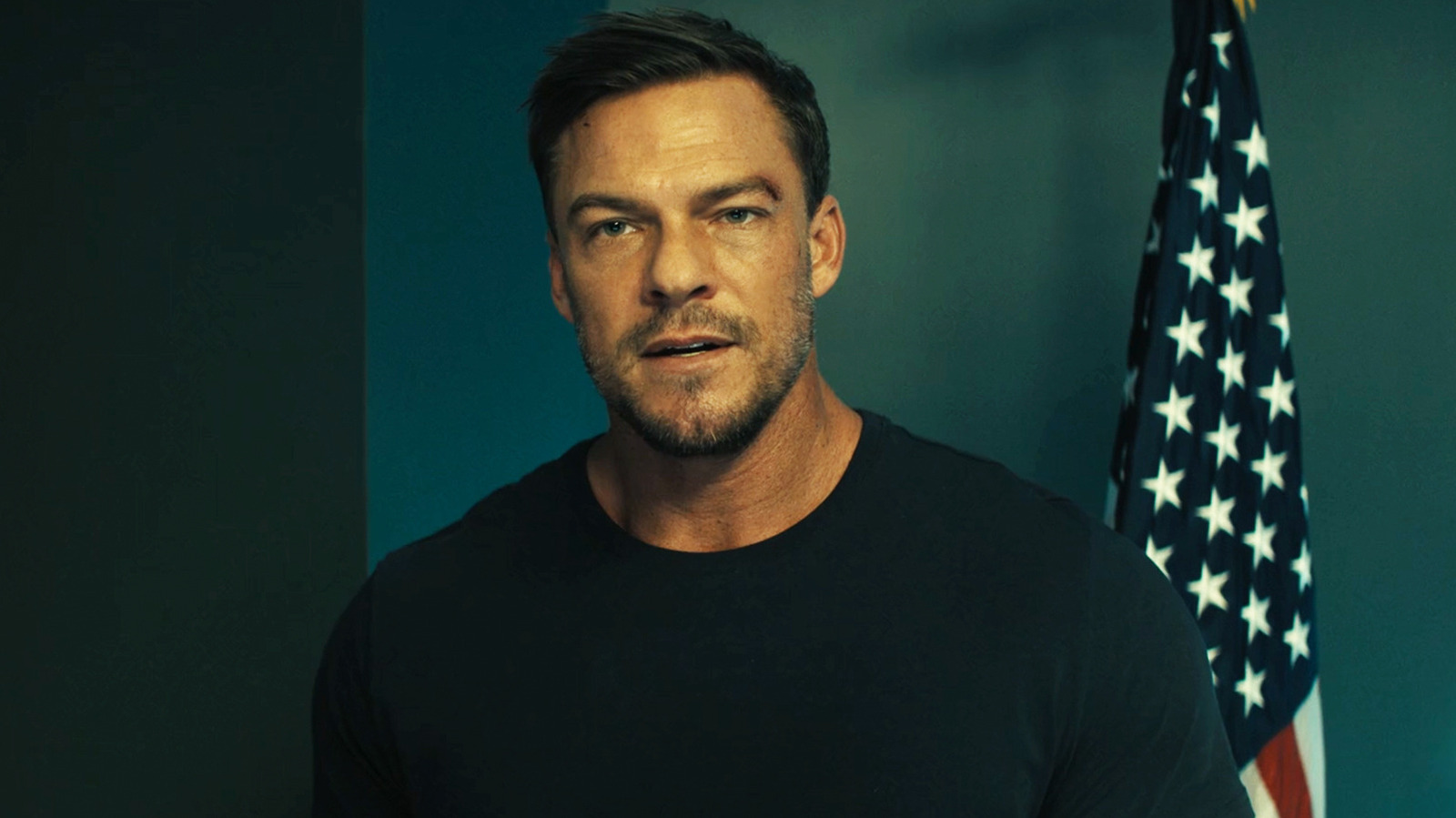
by admin | Jul 22, 2025 | TV & Beyond Articles
Prime Video’s hugely popular “Reacher” — which broke a ratings record with its third season — is a big part of why the show has been so successful, with fans finally getting an on-screen version of the titular hero who fully represents the character from Lee Child’s equally popular book series. But it took Ritchson some time to find the role that would make him a major star.
The actor took the long road to landing what has proved to be his breakthrough role. In fact, he’s been toiling away on both the big and small screens since the early 2000s, beginning with his role as Arthur Curry/Aquaman on “Smallville” back in 2006 — though his real TV debut came a few years prior when he auditioned for “American Idol,” but the less said about that the better. After “Smallville,” Ritchson continued to work consistently. Some of his more notable roles include Gloss in the “Hunger Games” films and Hank Hall/Hawk in DC’s “Titans.” Ritchson starred in an overlooked MMA movie, which was recently made available on Prime Video, he played Raphael in 2014’s “Teenage Mutant Ninja Turtles” and its sequel, 2016’s “Teenage Mutant Ninja Turtles: Out of the Shadows,” and he starred as Thad Castle in Spike TV’s sitcom “Blue Mountain State.”
All of these projects were successful in their own ways, though none of them propelled Ritchson to “Reacher”-level fame. But prior to becoming the major star he is today, the actor also appeared in an array of lesser-known projects, including a sci-fi series that deserved to be more well-known than it ultimately was.
Alan Ritchson’s Grindhouse-inspired dystopian sci-fi action show was insane
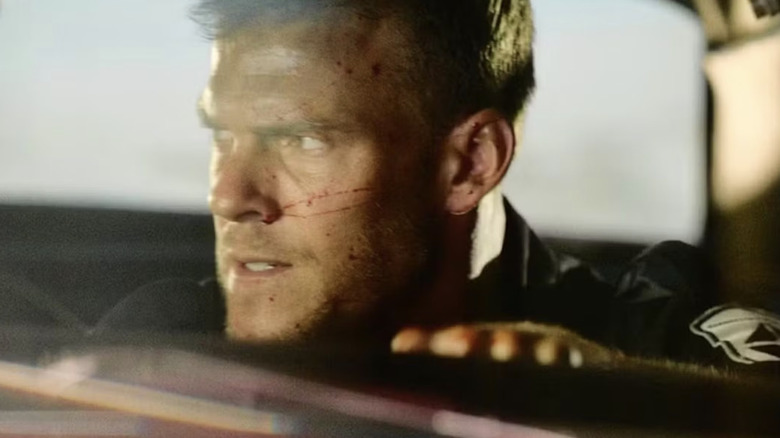
Syfy
Back in 2017, just before Alan Ritchson first appeared as Hank Hall in “Titans” (before leaving after season 3), the actor landed a starring role in SyFy’s “Blood Drive.” The show was set in a dystopian version of 1999 wherein a cataclysmic event known as the “Great Fracking Quakes” physically split the United States into two. Separated by an enormous ravine known as “the Scar,” the country is in the process of being taken over by a corporation called Heart Enterprises, which uses mysterious discoveries from the Scar to allow them to control every aspect of the new U.S. society.
Ritchson stars as good guy LA police officer Arthur Bailey, who investigates an underground race called the Blood Drive. This death race across America involves cars that run on human blood (which should give you a good idea of the show’s tone), and after Bailey’s investigation is discovered by the master of ceremonies, Julian Slink (Colin Cunningham), he’s forced to team up with dangerous temptress Grace D’Argento (Christina Ochoa) to take part in the race. The whole show was made in a 1970s grindhouse style, emulating the look of low-budget exploitation and splatter movies, making for a unique but short-lived series that didn’t necessarily get the response it deserved.
There were 13 episodes of “Blood Drive” for its first season, but the show was cancelled fairly early on in its run, according to series creator James Roland, who announced the cancellation himself the same night the finale aired. According to Deadline, the show had a “promising start” with 834,000 viewers for its premiere episode, but the numbers quickly dropped, with the show averaging 300,000-400.000 viewers for most episodes. That said, given the positive critical response and the fact that fans of the show seemed to really enjoy it, had it been given more of a chance to grow an audience, it might have become a popular cult show.
Blood Drive could have been a cult hit
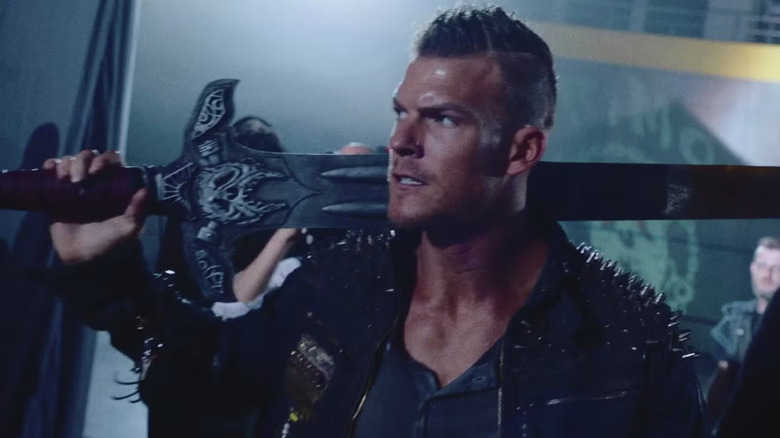
Syfy
“Blood Drive” gave us one of Alan Ritchson’s best performances, with the actor fully embracing the wildness of the series. What’s more, critics were clearly quite taken with the end result. “Blood Drive” has a 76% critic score on Rotten Tomatoes based on 21 reviews, with Charles Bramesco of Rolling Stone finding the “cinema du carsploitation fun” quite appealing. The Hollywood Reporter’s Daniel Fienberg, meanwhile, saw a lot of value in “a show that just aspires to be a bloody, leering, disreputable hoot and largely succeeds.”
Not everyone was impressed, however, with Sophie Gilbert of The Atlantic opining that the series “isn’t a television show so much as a mashup of everything that’s ever offended the Parents Television Council.” Still, on the whole, you can’t say it was the critical reception that killed “Blood Drive.” Neither can you say that fans of the show weren’t passionate enough. Judging by the Reddit comments that came in the wake of its cancellation, “Blood Drive” was a hit with the viewers who did manage to catch it, with one fan calling the series “incredibly fun, ridiculous, and the closest thing to a Mad Max-type show.” Others lamented how SyFy seemed a tad too cancel-happy, with one Redditor writing, “Syfy should really be called ‘Cancelfy’ because that’s all they do.” Elsewhere on Reddit, fans of “Blood Drive” accepted that the ratings were low but talked up the show overall, with one user calling it a “fun series through and through” and praising the “impeccable art direction to mask its low budget trappings.” They added, “For a low-budget SyFy production, it was stylish in a way stuff like ‘Dark Matter’ and ‘Killjoys’ didn’t have the imagination to pull off.”
With all this in mind, it really does seem as though, given a little more time, “Blood Drive” would have surely gained a certain cult status and given Alan Ritchson one less series that only lasted one season on his résumé. That said, Ritchson isn’t far from the only talented actor to star in a series that lasted just one season, and the short lifespan of “Blood Drive” certainly doesn’t speak to his performance of the show’s quality. TV history is full of shows that lasted for just one run of episodes, including the recent example of “The Residence,” which, by all accounts, was a success but was cancelled by Netflix after just one season.
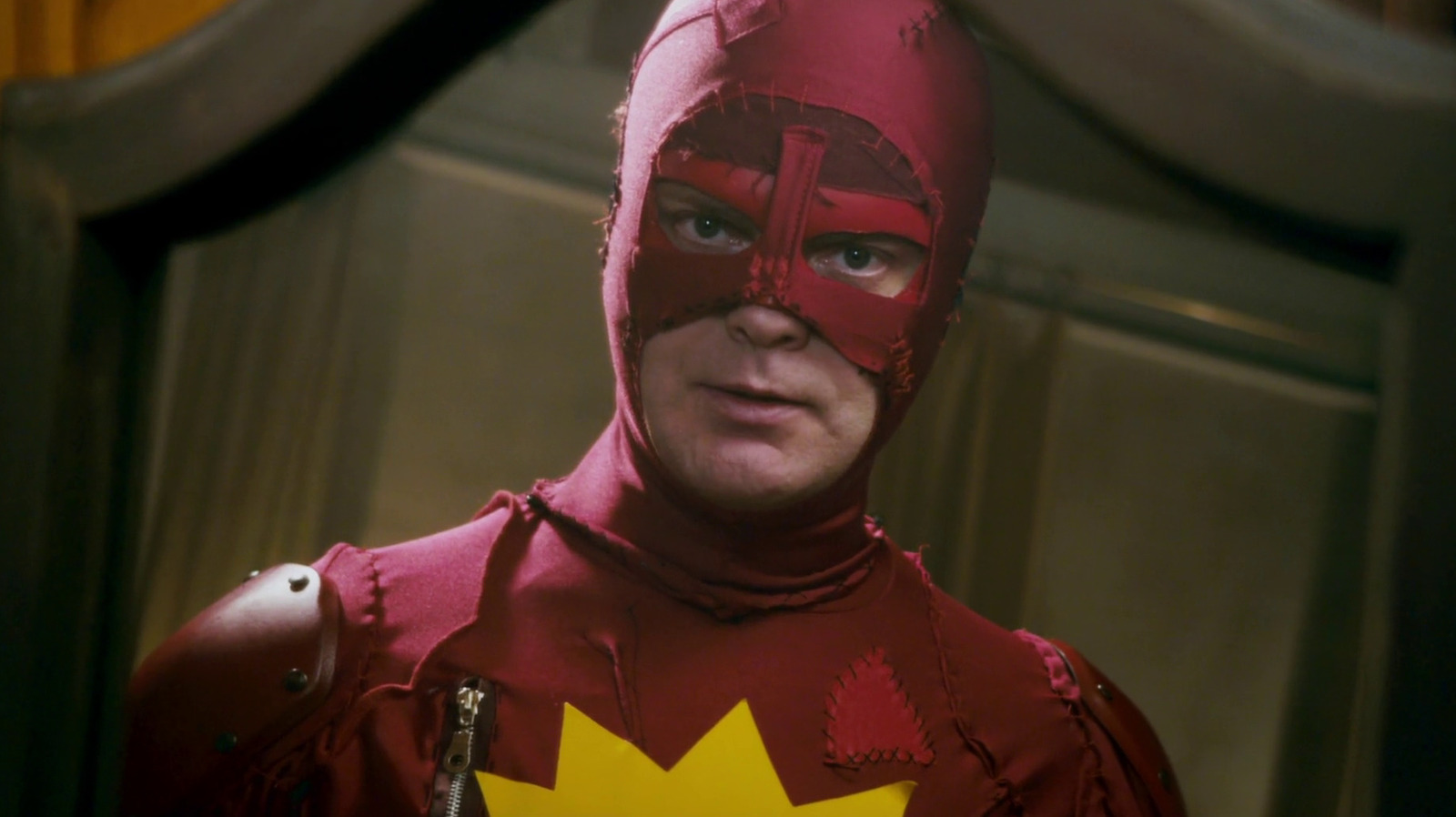
by admin | Jul 22, 2025 | TV & Beyond Articles
“Slither,” a horror comedy that wound up a cult classic, showcased a distinctive vision we don’t see much anymore. In that film, his passion for horror, goofy characters, and dark humor was dripping from every scene. He was well-versed in the genre and knew how to craft amusing, relatable, and vulnerable characters we were inclined to root for — it’s why “GOTG” became instantly lovable in the first place. Yet instead of going down the rough and bumpy path of horrors, he chose another direction.
That brings us to his second feature, “Super,” a criminally underrated pseudo-superhero flick in which Gunn has taken his weirdo approach and morbid sense of humor even further than before.
Super was Gunn’s experiment (and eventually blueprint) for developing a likable misfit
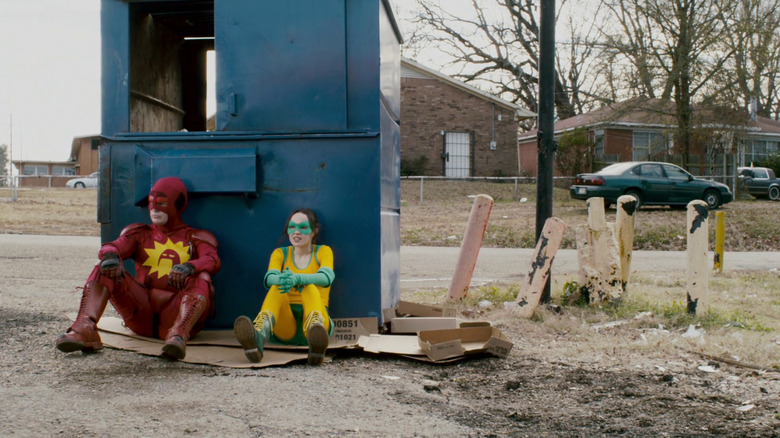
IFC Midnight
“Super’s” protagonist, Frank Darbo (Rainn Wilson channelling his inner lunatic that made him a star in “The Office”), was the blueprint of the reject/loser-type protagonist that Gunn done to perfection four years later in “Guardians of the Galaxy Vol. 1.” It was somewhat of an experiment for the writer-director to see how far he could take a resigned, slightly delusional, and loony character, and turn him into a hero (in an R-rated movie nevertheless that granted him a much-needed creative freedom). Therefore, Frank is rough and unbalanced at times, but it’s also strangely grounded and real because of his ordinariness.
When we first meet him, he’s the antithesis of cool — boring, wimpy, and unattractive. His pretty wife, Sarah (Liv Tyler), is with him out of gratitude. Frank helped her get clean from her drug addiction, so she married him. But whatever it was that made Sarah fall for him had worn off a long time ago. Their marriage no longer functions. So it’s hardly a surprise that Kevin Bacon’s macho drug dealer and strip club owner swoops in to snatch her away from him in an instant. At first, Frank feels utterly depressed and powerless against this douchebag, but for once in his sorry-ass life, he finds the courage to stand up to the bully and defend what’s his. Well, only after he’s touched by the finger of God and meets the Holy Avenger (Nathan Fillion) (the fictional character of a bizarrely religious network show who tells him to fight crime) in a disturbing vision. After all, we all need some divine purpose to fight on.
Of course, Frank is a weirdo. So his way to become a superhero, catch criminals, and take his girl back is unusual. He goes to the local comic book store for inspiration — where he also finds his eventual sidekick, the nerdy store clerk, Libby (Elliot Page) — and comes up with his un-caped crusader persona, The Crimson Bolt. Lacking any supernatural ability, muscle, or wit, he has to deal with the bad guys in his own way. So he puts on a poor-man’s Daredevil costume, grabs a pipe wrench, and develops the catchphrase, “Shut up, crime!” With that, he’s ready to dive in and become a savior — until reality kicks him in the nuts.
The world wasn’t ready for the Crimson Bolt
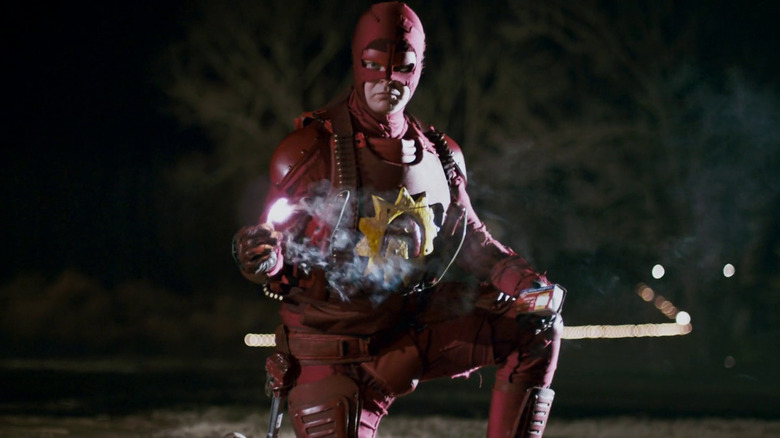
IFC Midnight
Although “Super” was a critical and commercial failure at the time of its release, it served as the movie that helped Gunn find his voice. In retrospect, he basically extended upon the same tone that made “Slither” a blast. While that film celebrated and paid homage to specific horror tropes, “Super” aimed to forge its own path by turning superhero clichés on their heads. Admirably, it was also shot on a significantly lower budget ($2.5 million as opposed to “Slither’s” $15 million), which forced Gunn to come up with cheaper yet inventive visuals and narrative gimmicks that greatly complemented the story’s primary spirit.
However, the fact that it came out right after Matthew Vaughn’s beloved and thematically similar “Kick-Ass” didn’t help. In terms of scale and action, Gunn’s film had no chance to compete. Its excessive violence, black humor, and sometimes odd sexual energy might have been off-putting to a general movie-going audience. Most of the world just wasn’t ready for such an eccentric and awkward hero as the Crimson Bolt. To the fans of “Slither” (like myself), however, “Super’s” over-the-top bonkerness seemed like the natural evolution of a filmmaker who felt most alive in the intersection of funny and weird.
“Slither” and “Super” were refreshingly original and alluring, which always made me wonder what Gunn could’ve done if he hadn’t been sucked in by the big studios. If there was an alternate universe where he stuck to making deranged horrors and twisted comedies, mixing up genres any way he wanted, and carving out a different space in the land of pop culture than what he ended up with. I guess we’ll never know. But at least we’ll always have these two movies to go back to if we get tired of “Superman” and whatever other superhero Gunn might bring us on the big screen in the coming years.
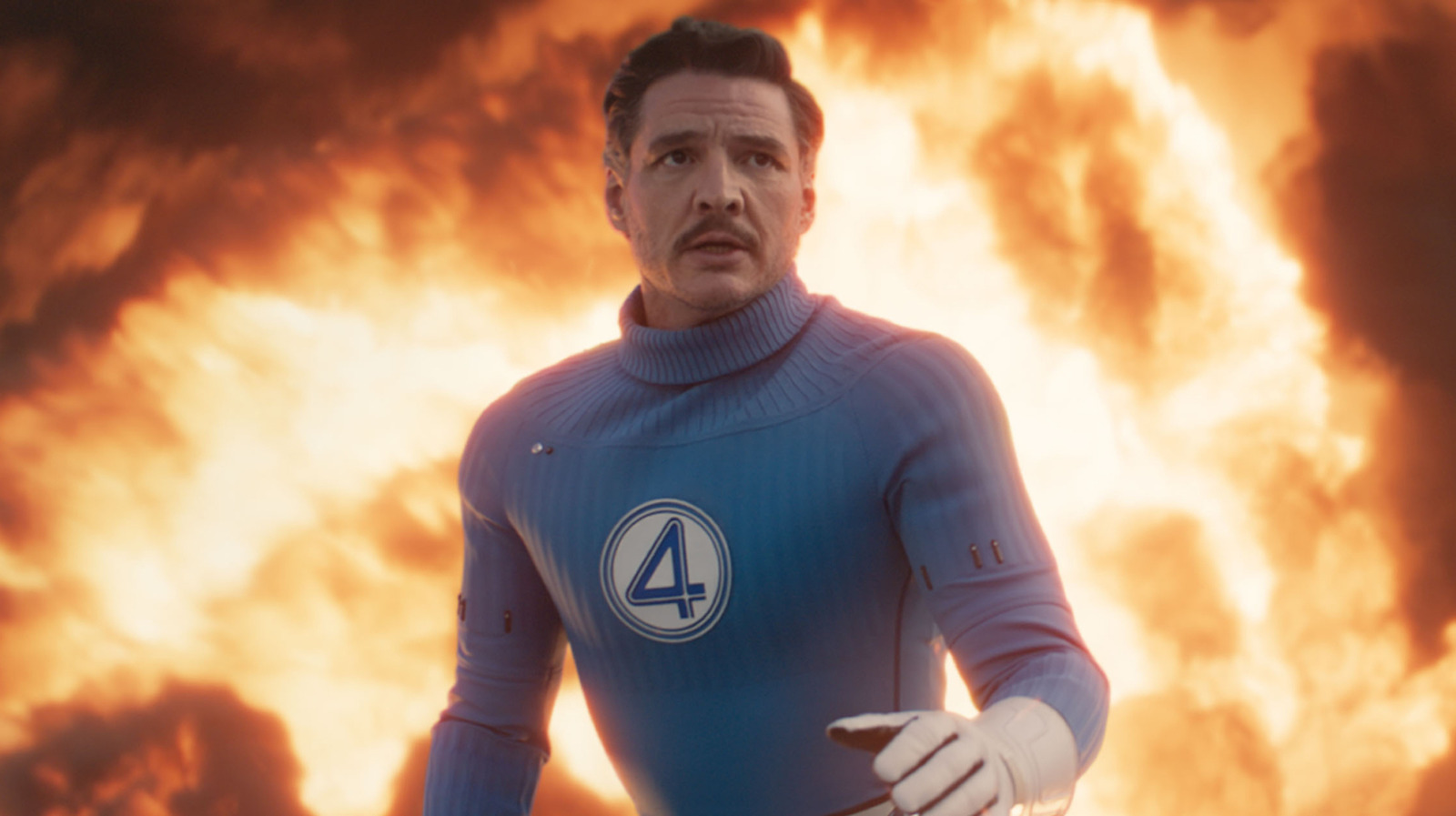
by admin | Jul 22, 2025 | TV & Beyond Articles
Disney completed its purchase of Fox for $71.3 billion. For Marvel fans, that meant that the “X-Men” and “Fantastic Four” rights were finally going to be in the hands of Marvel Studios. That has now materialized in the form of “The Fantastic Four: First Steps,” which kicks off Phase 6 of the Marvel Cinematic Universe, the final phase of the Multiverse Saga, so there’s a lot on the line and a lot coming our way over the next few years. Does this movie have a post-credits scene to help tee up what’s to come?
MCU fans have become accustomed to credits scenes over the years. Recently, the credits scene in “Thunderbolts” was directly connected to “Fantastic Four.” It’s the nature of the beast. We’re here to offer up a spoiler-free guide for viewers who plan to see “First Steps” in theaters. We’ll let you know whether or not you need to stick around and if director Matt Shakman, of “WandaVision” fame, has anything else in store for audiences after the credits roll. Seriously, we won’t spoil anything, so proceed without fear. Let’s get to it.
How many credits scenes does The Fantastic Four: First Steps have?
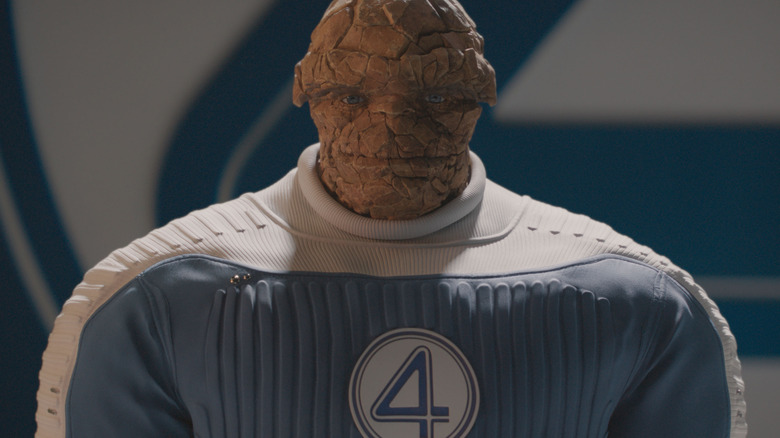
Marvel Studios
Yes, “The Fantastic Four: First Steps” does have credits scenes that fans should be aware of. There are two different scenes attached to the movie. One is a mid-credits scene, and without saying too much, let’s just say that fans will absolutely want to stick around for it. The second one is a true post-credits scene that happens at the very end of the credits, and it’s more fun than monumental, but it’s there for those who wish to see it.
Given that next year will see the release of “Avengers: Doomsday,” which features a massive cast including Robert Downey Jr. as Doctor Doom, the inclusion of some credits scenes here is not surprising. Everything is building to “Avengers: Secret Wars” in 2027, which will bring the MCU’s Multiverse Saga to a close.
The cast for Marvel’s latest is led by Pedro Pascal (“The Mandalorian”) as Reed Richards, Vanessa Kirby (“Hobbs & Shaw”) as Sue Storm, Joseph Quinn (“Stranger Things”) as Johnny Storm, and Ebon Moss-Bachrach (“The Bear”) as The Thing. Ralph Ineson (“Nosferatu”) is also on board to bring Galactus to life, with Julia Garner (“Wolf Man”) playing Silver Surfer. The synopsis for the movie reads as follows:
Set against the vibrant backdrop of a 1960s-inspired, retro-futuristic world, Marvel Studios’ The Fantastic Four: First Steps introduces Marvel’s First Family — Reed Richards/Mister Fantastic, Sue Storm/Invisible Woman, Johnny Storm/Human Torch and Ben Grimm/The Thing as they face their most daunting challenge yet.
Forced to balance their roles as heroes with the strength of their family bond, they must defend Earth from a ravenous space god called Galactus and his enigmatic Herald, Silver Surfer. And if Galactus’ plan to devour the entire planet and everyone on it weren’t bad enough, it suddenly gets very personal.
“The Fantastic Four: First Steps” hits theaters on July 25, 2025.
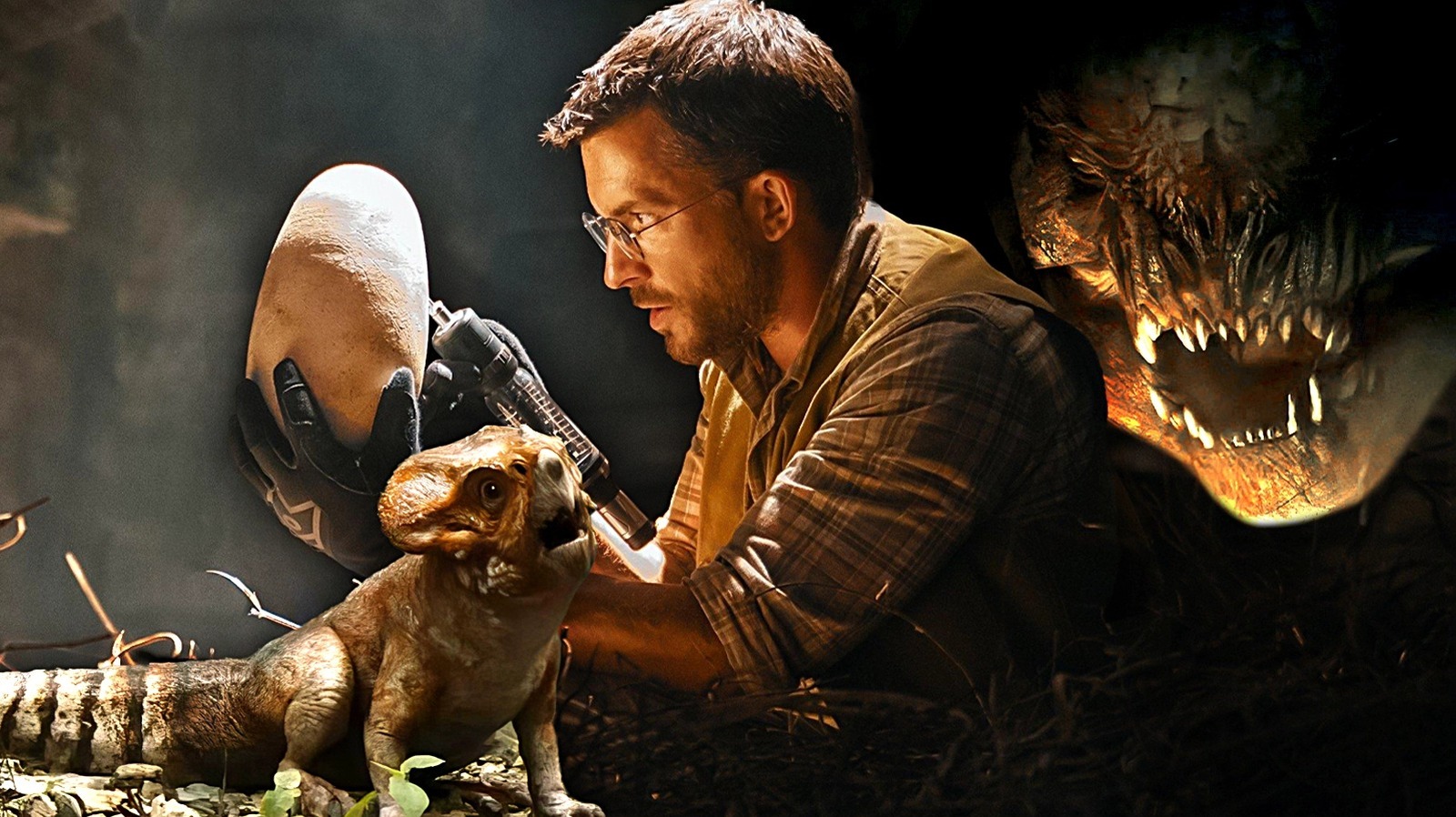
by admin | Jul 22, 2025 | TV & Beyond Articles
a potential viable business with Jurassic Park), but “Jurassic World Rebirth” proves it’ll always turn into a nightmare. Sorry, but humans and dinosaurs aren’t meant to coexist — and don’t go blaming the dino-buddies for this fact, because people don’t know how to leave well enough alone. It’s like an addiction for these folks to be locked up with man-eating creatures in an attempt to see if they can survive with all their limbs intact. At this point, why don’t they just rub BBQ basting all over themselves and parade in front of the dinosaurs?
While this franchise asks the audience to suspend a lot of disbelief, especially when it comes to the science and what dinosaurs really looked like, “Jurassic World Rebirth” possesses logic loopholes that can’t be ignored. Some of them teeter between “this could have been fixed in another draft” to “OMG! This is the dumbest thing I have ever heard.”
Look, it’s necessary to applaud the creative team for pushing the film in a different direction and trying something new, but there are threads here that if pulled, threaten to bring down the entire storyline with it. If you’re cool with just going with the flow, that’s fine too — no shade here. However, if you feel like laughing at how silly this film is when you interrogate it even a little bit, join us to discover the 10 things that don’t make sense in “Jurassic World Rebirth.”
The scientists try to extract DNA from mutated dinosaurs
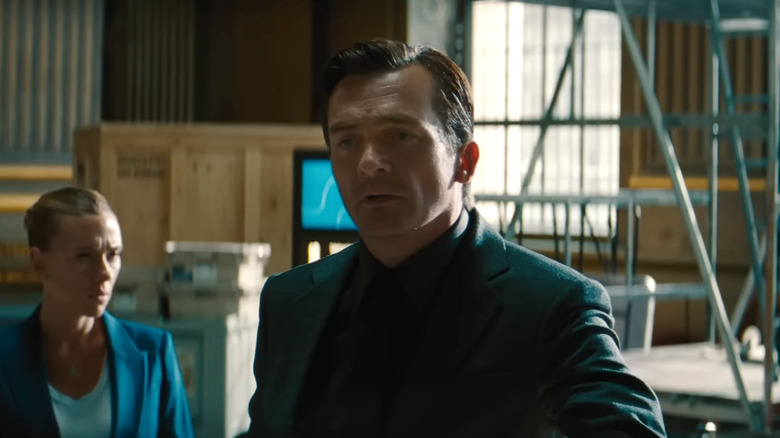
Universal Pictures
The entire premise of “Jurassic World Rebirth” revolves around the pharmaceutical company Parker-Genix wanting to get DNA from three of the largest dinosaurs alive, because this will help them to create a miracle drug for heart disease treatments, so they send a team to gather the samples. Now, once you stop laughing at the absurdity of a pharmaceutical company wanting to do something good in this world, consider this for a second: where are these dinosaurs located? Oh, that’s right, on Ile Saint-Hubert. You know, the place where InGen employees turned into the classic “X-Men” villain Mister Sinister and tampered with mutations.
So, here’s a legitimate question: why are scientists wanting to extract DNA from what’s most likely mutated dinosaurs? On this island, InGen played god, and it’s unlikely that it kept up-to-date records where it stated, “Yeah, we gave a warthog’s nose and raptor feet to a Tyrannosaurus rex.” Resultantly, all the data acquired won’t be conclusive — plus, it’ll be riddled with all kinds of permutations and risks.
It isn’t implausible to think that learnings could be taken from dinosaur DNA in general, but any application might be futile in this circumstance. One, because the dinosaur is a mutation of god knows what, and two, the genomes between dinosaurs and humans differ drastically (never mind what happens when you throw mutations into the mix). Unless a real-life scientist can come forward and say, “Well, actually,” we’re chalking this down to too unbelievable.
Dolores might not survive with Isabella
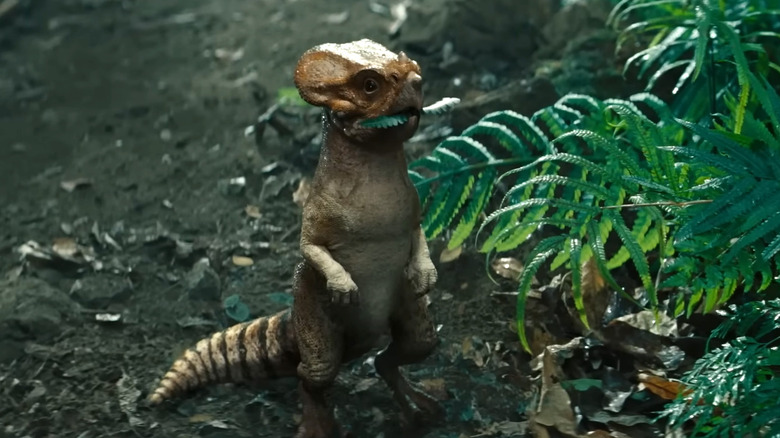
Universal Pictures
One of the dinosaurs that isn’t scary nor dangerous in “Jurassic World Rebirth” is Dolores, the Aquilops. Dolores makes friends with the young Isabella Delgado (Audrina Miranda) and follows her around before eventually leaving the island with Isabella and the surviving humans. It’s a cute moment, and a reminder that friendship, uh, finds a way.
Here’s the sad part, though: Isabella may have doomed Dolores by taking her off the island. The beginning of “Jurassic World Rebirth” confirms that the Earth’s climate has changed drastically since “Jurassic World Dominion,” and the dinosaurs aren’t doing well in it. The only place they can survive is around the equator. Ile Saint-Hubert is a few hundred miles east of French Guiana, which makes it incredibly close to the equator, so that’s ideal for dinosaurs like Dolores.
There is an American flag on the Delgados’ boat, which leads one to believe that’s where the family is from. Naturally, the United States is further away from the equator than Ile Saint-Hubert. What’s more surprising about this whole ordeal is how a paleontologist like Dr. Henry Loomis (Jonathan Bailey) doesn’t tell Isabella that it’s a bad idea to remove Dolores from her natural habitat and take her to a place where she may not survive. Considering how the film made such a big point about the world and climate change after the events of “Jurassic World Dominion,” it appears like someone forgot the rules when a cute dinosaur was introduced into the picture.
Reuben Delgado decides to sail with his family around the equator
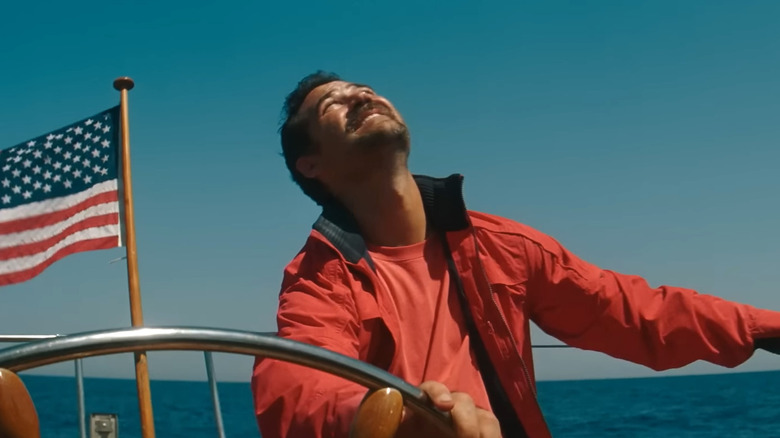
Universal Pictures
Spare a thought for Reuben Delgado (Manuel Garcia-Rulfo). He wants to reconnect with his daughters, Teresa (Luna Blaise) and Isabella. Heck, he’s even willing to tolerate Teresa’s boyfriend, Xavier Dobbs (David Iacono), who’s an acquired taste. Reuben has a grand plan: he’ll take them sailing across the Atlantic Ocean on his boat, La Mariposa. They’ll be able to bond away from civilization, modern distractions, and dry land.
What a swell idea, right? Wrong. What the hell is wrong with this man?! Has he not been following the news for the past 10 years? The events of the previous “Jurassic World” should be fresh in his mind. You know, how the Mosasaurus exists in water and if it attacks, it’s game over for anyone. Instead, this father decides to take his kids on a trip across the ocean, near the equator where the dinosaurs now gravitate toward, so they can spend quality time together. Look, if this was all part of a plan to leave Xavier there, you could understand it, but it’s madness otherwise.
Even though it’s revealed that people are tired of dinosaurs (a line from “Jurassic World Rebirth” that’s harder to believe than dinosaurs living today), there’s a difference between not being wowed by the creatures and blissful ignorance. Sure, these prehistoric beasts might be part and parcel of the film’s universe now, but they’re still dangerous. Reuben taking his family near the equator is like someone actively setting up camp in a lion’s den then being surprised by an attack.
The helicopter circles for only two minutes and at night
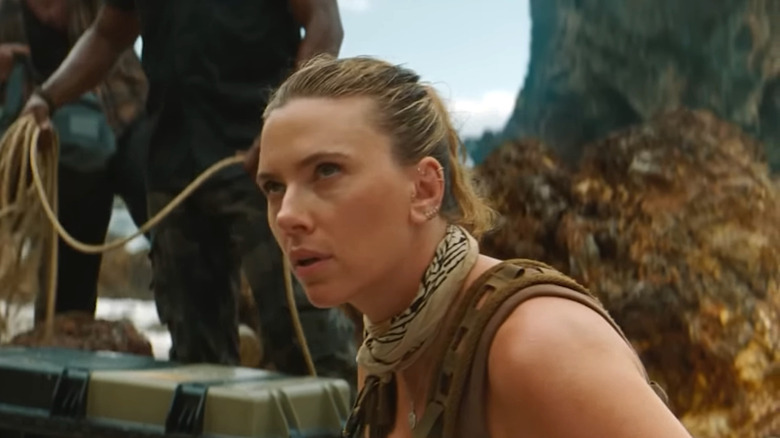
Universal Pictures
Inevitably, disaster strikes when Duncan Kincaid’s (Mahershala Ali) ship, the Essex, gets attacked by the dinosaurs in the water. This leaves Zora Bennett (Scarlett Johansson) and others shipwrecked on Ile Saint-Hubert. Zora, though, isn’t a newbie to expedition missions, so she reveals a contingency plan that she put in place. In 24 hours, a rescue helicopter is meant to circle the island for two minutes and get them out. Why only two minutes? Well, because that adds dramatic effect and tension to David Koepp’s screenplay, but for storyline purposes, it’s because the pilots are wary of dinosaur attacks and don’t want to be left exposed for too long.
So, why is the rescue helicopter only circling the island at night? Surely, this makes it tougher to see what’s going on below. If these pilots are so terrified of dinosaurs, wouldn’t it make more sense to conduct the search-and-rescue mission during daylight where their line of sight will be clearer? This isn’t a military operation where enemy forces are prepared for your arrival, and you need to get in and out before they notice you, so it feels — I don’t know — counterintuitive.
Some might argue that the cloak of darkness makes it less likely for the dinosaurs to spot the helicopter buzzing about. Well, that did absolutely no good here. In the end, the helicopter gets destroyed by the Distortus rex anyway. So, this rescue mission was for nothing.
Ile Saint-Hubert existed and no one ever mentioned it before
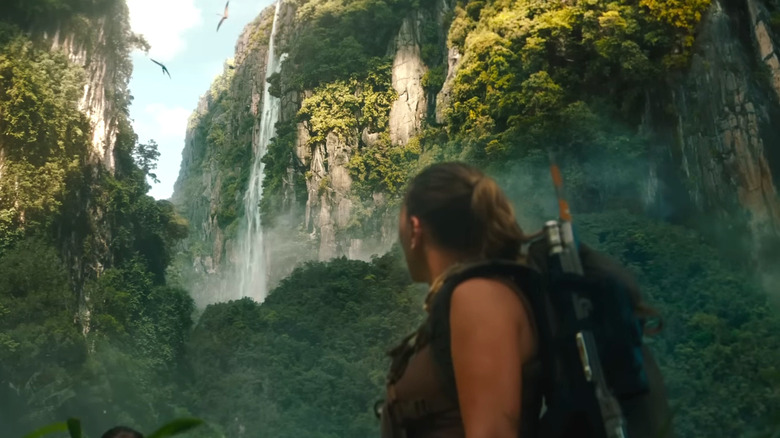
Universal Pictures
Let’s take a look at the facts for a minute: a lot of people died on Isla Nublar and Isla Sorna. Who’s to blame for it? InGen. The company wanted to recreate dinosaurs and turn them into theme park attractions. Afterward, Masrani Global Corporation acquired all of InGen’s assets and tried to do something similar — much to the same effect where people die and dinosaurs take over.
After all those deaths and catastrophes at Isla Nublar and Isla Sorna, the question needs to be asked: why did no one ever know about Ile Saint-Hubert until “Jurassic World Rebirth”? One could argue that InGen kept its presence hush-hush, but the incident with the Distortus rex happened a few years before the launch of Jurassic World. In other words, InGen was still continuing its shenanigans on the downlow after the events of Isla Nublar and Isla Sorna. How did InGen not go in front of congress for the numerous deaths and international incidents it caused? Are we really to believe that not one single ex-InGen employee squealed about the existence of Ile Saint-Hubert?
If Parker-Genix knew about it, surely there must have been others who were aware too. Of course, the easy answer here is that it’s a plot device that allows for the discovery of a new island in the franchise, but it still doesn’t make sense how it remained a secret until the events of “Jurassic World Rebirth.”
The plan to extract the DNA of the Quetzalcoatlus is just dumb
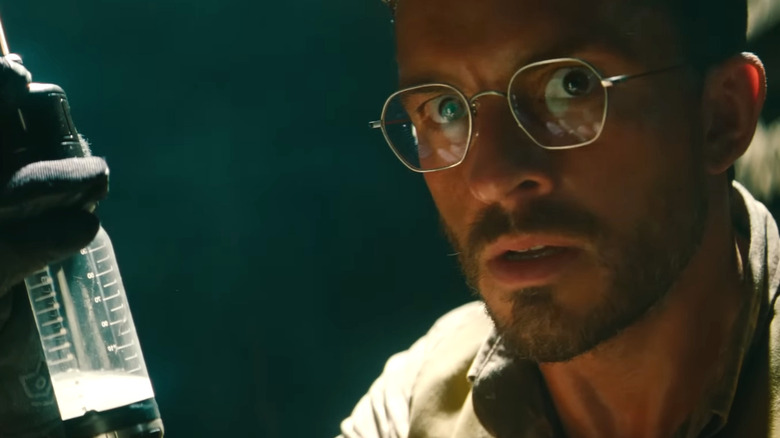
Universal Pictures
The team needs to gather the DNA of the three largest dinosaurs. Out of all three, the Titanosaurus — one of the new dinosaurs in “Jurassic World Rebirth” — is the easiest mission. The Mosasaurus provides a few challenges, but it gets done regardless. The most dangerous extraction involves the Quetzalcoatlus, since it’s an avian creature, and the team points out the obvious in “Jurassic World Rebirth”: it’ll be tough to hit a flying carnivore who is the size of an F-16 and might attack if threatened.
Resultantly, they come up with a plan to rappel down the rocks to the Quetzalcoatlus nest and extract the DNA from an egg. Anyone with a set of eyes can see how this is going to transpire, and it does as expected. The adult Quetzalcoatlus returns, angry that someone is messing with the egg, and ends up killing LeClerc (Bechir Sylvain).
Let’s not discount the fact that trying to extract DNA from a flying dinosaur is tricky business. However, this is easily one of the dumbest plans in the franchise’s history. They literally rappel into an isolated area and hope the adult doesn’t come back. What about luring the creature into an enclosed structure or pondering a much safer plan before heading out to the island? Judging by how these folks behave, you have to question if they are even professionals to begin with.
There aren’t many raptors on the island
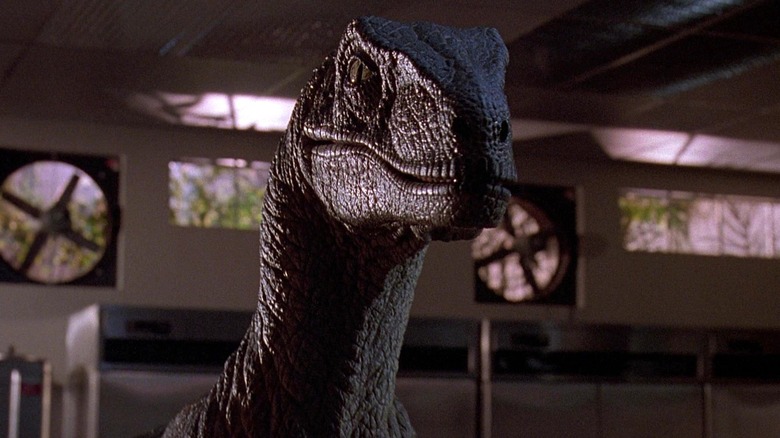
Universal Pictures
Look, whether it’s “Jurassic Park” or “Jurassic World,” the franchise is velociraptor-heavy. These deadly creatures feature predominantly, often presented as the MVPs of the films. In “Jurassic World Rebirth,” though, they’re largely absent. Sure, we spot two sneaky Steves lurking behind Xavier, who is answering the call of nature, but one of them gets pounced on by Mutadon, while the other runs for the hills. After that, there are no more raptors, which is odd, since they’re portrayed as pack creatures in the movies, so there should be more of them bopping around.
There’s a simple answer to this: director Gareth Evans likely wanted to shine the light on the Mutadon, which is a hybrid of a raptor and pterosaur, rather than rehash more raptor rampage. Unfortunately, this comes at the expense of the regular stars of the franchise, who take a backseat to these new mutants.
Simply put, it doesn’t feel like “Jurassic World” without the presence of raptors. They feature in the franchise’s biggest moments. Yes, even the talking raptor scene from “Jurassic Park 3.” Much like everyone expects to see a Batmobile in a Batman movie, the same can be said about raptors and “Jurassic World.” Without them, we are nothing.
The T-Rex can’t bite through a raft
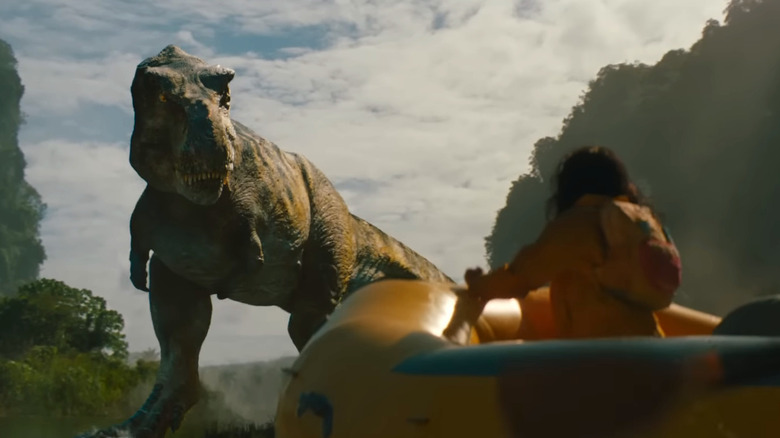
Universal Pictures
A bastion of the “Jurassic” franchise has been the Tyrannosaurus rex. While the little arms may struggle to clap along to songs, those powerful jaws are more than capable of immense destruction. The T-rex very possibly possessed the highest bite force of any animal who has roamed the Earth. That’s why Rexy in 1993’s “Jurassic Park” was able to bite through the thick and serpent-like skin of lawyer Donald Gennaro (Martin Ferrero) so easily.
In “Jurassic World Rebirth,” something doesn’t make sense in the T-rex’s solitary scene. It’s the part of the film when Teresa sneaks past a snoozing Tyrannosaurus to grab a raft so that she, her sister, father, and boyfriend are able to go down the river. Now, this is a proper raft, not a plastic flamingo that you blow up to chuck in a pool. While Teresa and Co. successfully get the raft onto the water and paddle away, the dangerous dinosaur goes after them. Teresa, Reuben, and Xavier get thrown off the raft by the T-rex, while Isabella hangs on under the structure. Rexy gnaws at the raft, but he fails to penetrate it, as Isabella lives to see another day.
It makes sense that this raft would be made of sturdy material to withstand rocks and other sharp objects, but how in the world does this T-rex, with jaws of steel, not manage to penetrate it? Did you see the size of this dinosaur’s teeth?
The Distortus rex was contained by a single door
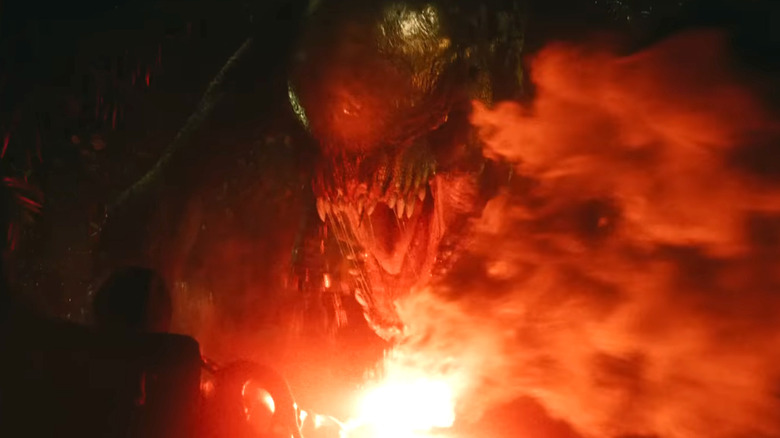
Universal Pictures
The flagship mutant dinosaur of “Jurassic World Rebirth” is the Distortus rex, or D-rex for short. This mutated version of a Tyrannosaurus rex boasts six limbs and a big head that makes it a dead ringer for a Xenomorph. The dinosaur also has an insatiable appetite, always finding space in its stomach for another pound of human flesh.
Viewers meet the D-rex early on, as a Snickers wrapper causes havoc in an airlock and results in the security system being rebooted — somebody must have been watching “Final Destination” when this Rube Goldberg machine-inspired scene was written. Amazingly, this is all it takes to release the D-rex after he snacks on an InGen employee, then breaks through the door and roams Ile Saint-Hubert like a Chihuahua that saw the gate being left open.
Now, everyone knows that InGen wasn’t too hot on safety protocols and relied on a disgruntled IT technician to manage Jurassic Park, but was all that was holding back a D-rex from totally annihilating InGen employees a single door? This is ridiculous. InGen probably downloaded its safety program for free from Limewire too.
People still willingly go to a dinosaur island
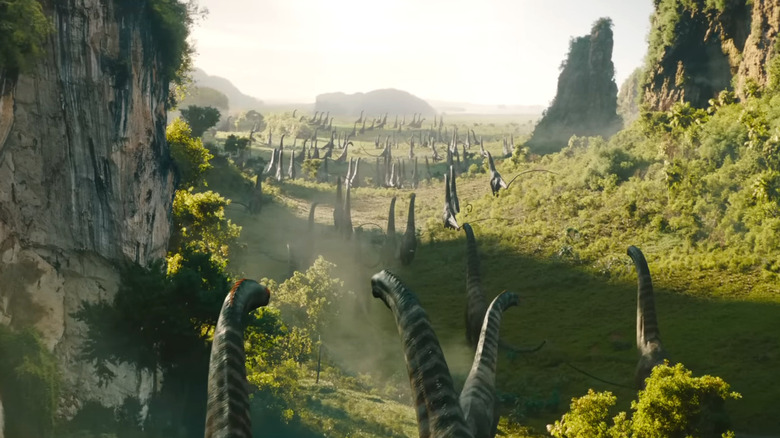
Universal Pictures
How many times have humans gone to a dinosaur island? The answer is too many. “Jurassic Park” taught everyone a valuable lesson: when things go wrong in a place like this, they go terribly bad. Still, no one listened, and the same happened in “The Lost World: Jurassic Park,” “Jurassic Park 3,” “Jurassic World,” and now “Jurassic World Rebirth.”
Yet, somehow, someway, someone manages to convince a group of cursed fools to venture onto a dinosaur island again and again. The hook in “Jurassic World Rebirth” is a lot of money for Zora and her pals, while Dr. Loomis and Martin Krebs (Rupert Friend) want to find a cure for heart disease, but these people are either gullible or possess more guts than brains. In Zora and her team’s case, what’s the use of all that money if they never make out alive? Same for Dr. Loomis and Krebs. History has proven that not everyone survives on a dinosaur island, and many people perish before the credits roll in this movie.
Of course, you’re probably screaming at your screen and saying, “How else will they make more of these films then, you idiot?” That’s my point. It’s beyond being believable now. There’s no good reason to go to a dinosaur island anymore. Someone can tell me there’s a first edition of “Detective Comics” #27 and unlimited pairs of Jordans on Ile Saint-Hubert. I don’t care. I’m not going.


































